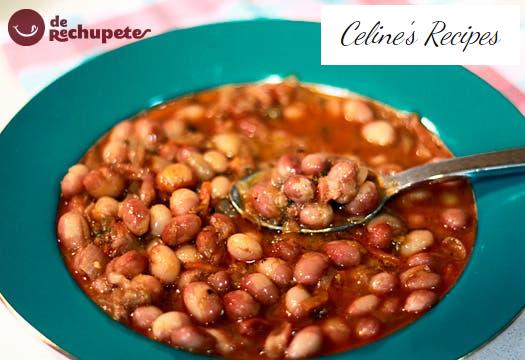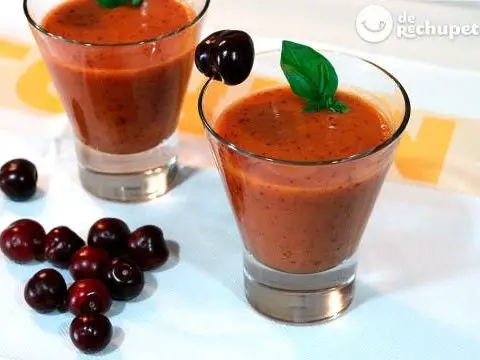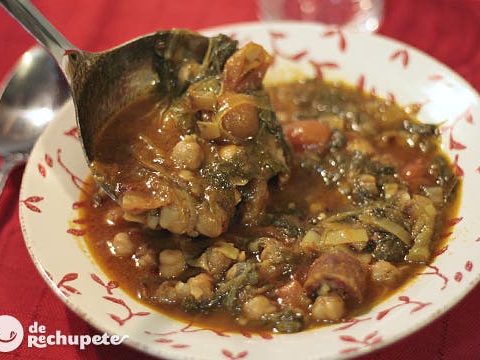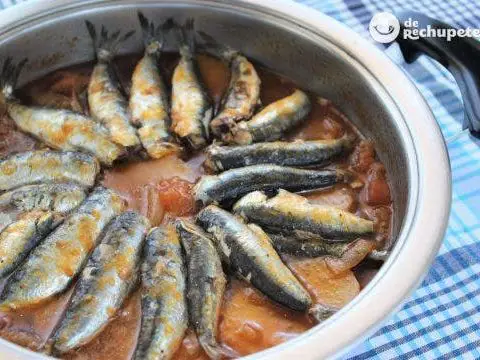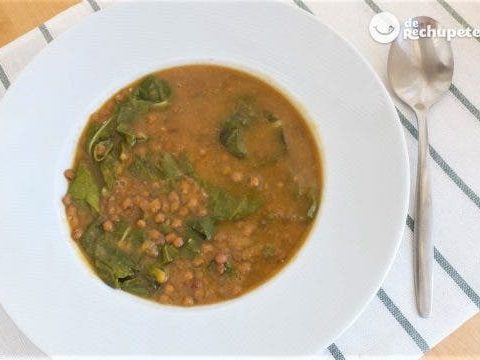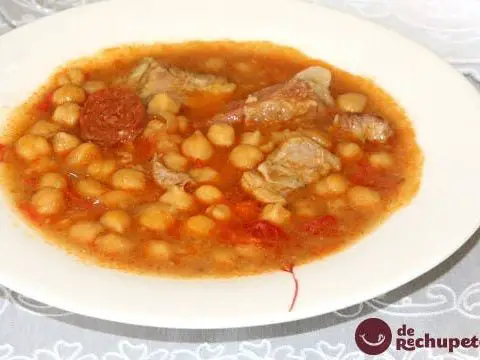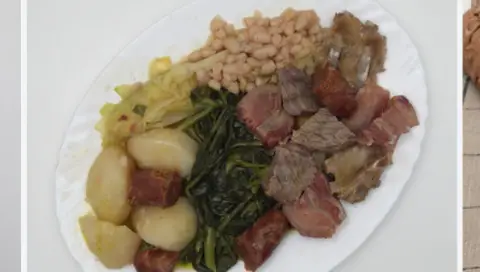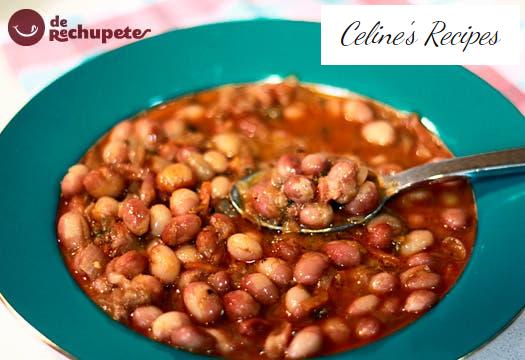
Info.
- Easy
- 120 minutes
- For 6 people
- € 1.5 / person
This cool spring that we are having encourages eating vegetables and we still have them at home on our weekly menu. On this occasion, it has been the pinto, dry or red bean , as a variety of red bean with shorter and rounded seeds is known, not very large and with a characteristic maroon color. They are common in La Rioja and perhaps it is one of its most famous legumes. There, in addition to the vegetable base, they incorporate meats from the local slaughter such as chorizo and a good piece of bacon. We could call this dish cararrones with vegetables , because I have cooked them a little more “light”, so I leave it to your choice to incorporate meat.
The towns of Castañares de Rioja, Anguiano and those of Belorado (Burgos) are famous for growing this legume. You can find varieties such as the Pilar caparrón in the Santo Domingo area, the Colorao del Alto Najerilla caparrón, the Tolosa Negro caparrón in Santo Domingo de la Calzada and the Pinto caparrón in the Oja Valley. They are generally climbing plants and are usually guided with poplar sticks or shrubs such as elder, so it is easy to locate their crop in the landscape if you are traveling through La Rioja.
In October the “Bean Festival” is celebrated in the town of Anguiano. A fantastic occasion to try the authentic Rioja shellfish, an exaltation to this product, accompanied by good chorizo, pork leg and bacon, chillies, loaf of bread and Rioja wine, how could it be otherwise? You can also find some dishes prepared with ear and rib, which is how I have tried them in the area and they are delicious. I leave you with an interpretation of this Riojan dish, a little healthier for the body and suitable for vegetarians, a luxury recipe for any day of the year.
Before cooking the cararrones
Almost all the shells I have seen are dry, they even come vacuum packed, so their preservation is perfect. When the season starts, late summer and early fall, they can be found fresh or so fresh that they don’t need to be soaked. They are easy to store for consumption throughout the year. The most important thing, whether they are shells or legumes of another kind, is that you always buy the best quality that you can within your possibilities, new legumes.
- The day before we put them in warm water with a handful of salt and leave them to soak for 10-12 hours overnight. We should not have more than 12 hours, since after this time the legume loses qualities.
- It is important that, in addition to hydrating, we wash them afterwards to remove possible impurities and that no damaged beans that can tear a tooth strain, I say from experience. We will only have to drain and set aside until the time to prepare the casserole.
- If you are lucky to find them fresh, you only need to leave them to rest for an hour in a little hot water. This will help them cook more quickly, once that time has passed we just have to wash them and put them in the casserole with the rest of the vegetables.
- The cooking time is relative, because the truth is that one legume is never the same as another, sometimes they are tender, others are older, others have thicker skin, others if you spend time they fall apart … with what You should try at the end of the approximate time that I give you to make sure that they are on point.
Preparation of the casserole casserole with vegetables
- Chop the onions or onion, the tomato, the leek and the garlic cloves into small pieces so that they dissolve in the cooking. In the end we will hardly notice any texture of any of the ingredients but its flavor. As many people do not like to find garlic on the plate you can pour it whole and remove it halfway through cooking or crush it.
- We wash and peel the carrots, cut into small pieces, the smaller the faster they will cook.
- In a large casserole, pour a good stream of egg, the onions, the leek, the garlic cloves, the tomato cut with its skin and the carrots. We fry everything for 10 minutes over medium high heat with a little finely chopped parsley, so that the flavors mix well. Add a tablespoon of paprika and the saffron threads, stir mixing all the flavors for a minute.
- Add the hydrated and drained shrimp. We also fry for 2-3 minutes, stirring with a wooden spoon quickly and put everything together (3 minutes).
- We cover until the shells are completely covered in liquid, with cold water so that it begins to boil slowly, if you need more water in the cooking process it should always be added cold. When it begins to boil add the two bay leaves and lower the heat so that it slows down and the vegetables do not break.
- When it takes 1/2 hour cooking we add salt to taste. Remove with a ladle part of the fat from the cooking with the oil, there will not be much but it will be a little softer. In the case that they are fresh shells they would have about 15 more minutes approximately, if they are dry shells they will take an hour.
- In some towns of La Rioja they usually add at the last moment one or two boiled egg yolks, crushed and melted with a little of the sauce of the caparrones, it is not essential but it gives it a very rich touch. From this moment on, the stew should no longer boil.
- Remove from the heat and let it rest a little before serving.
We put the cararrones in a deep plate and eat. That easy! Next time I will prepare the caparrones with their ear, tail, sausage, bacon and rib, it will be a show, although I prefer to wait to go through La Rioja to look for all the native ingredients of the area, I will tell you.
If you like vegetable recipes, you can find other impressive dishes for those who are passionate about beans, fabe or beans. For example, some red beans with chorizo , the famous Asturian verdinas with prawns or some red beans with vegetables .
